Portal:Hotels
Portal maintenance status: (July 2022)
|
The Hotels Portal

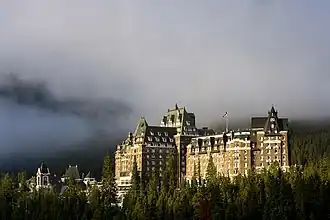
A hotel is an establishment that provides paid lodging on a short-term basis. Facilities provided inside a hotel room may range from a modest-quality mattress in a small room to large suites with bigger, higher-quality beds, a dresser, a refrigerator, and other kitchen facilities, upholstered chairs, a television, and en-suite bathrooms. Small, lower-priced hotels may offer only the most basic guest services and facilities. Larger, higher-priced hotels may provide additional guest facilities such as a swimming pool, a business center with computers, printers, and other office equipment, childcare, conference and event facilities, tennis or basketball courts, gymnasium, restaurants, day spa, and social function services. Hotel rooms are usually numbered (or named in some smaller hotels and B&Bs) to allow guests to identify their room. Some boutique, high-end hotels have custom decorated rooms. Some hotels offer meals as part of a room and board arrangement. In Japan, capsule hotels provide a tiny room suitable only for sleeping and shared bathroom facilities.
Hotel operations vary in size, function, complexity, and cost. Most hotels and major hospitality companies have set industry standards to classify hotel types. An upscale full-service hotel facility offers luxury amenities, full-service accommodations, an on-site restaurant, and the highest level of personalized service, such as a concierge, room service, and clothes-ironing staff. Full-service hotels often contain upscale full-service facilities with many full-service accommodations, an on-site full-service restaurant, and a variety of on-site amenities. Boutique hotels are smaller independent, non-branded hotels that often contain upscale facilities. Small to medium-sized hotel establishments offer a limited amount of on-site amenities. Economy hotels are small to medium-sized hotel establishments that offer basic accommodations with little to no services. Extended stay hotels are small to medium-sized hotels that offer longer-term full-service accommodations compared to a traditional hotel. (Full article...)
Recognized articles -
-
 Image 1
Image 1
The Waldorf Astoria New York is a luxury hotel and condominium residence in the Midtown Manhattan neighborhood of New York City, New York. The structure, at 301 Park Avenue between 49th and 50th Streets, is a 47-story, 625 ft (191 m) Art Deco landmark designed by architects Schultze and Weaver and completed in 1931. The building was the world's tallest hotel until 1957, when it was surpassed by Moscow's Hotel Ukraina. An icon of glamor and luxury, the Waldorf Astoria is one of the world's most prestigious and best-known hotels. Both the exterior and the interior of the Waldorf Astoria are designated by the New York City Landmarks Preservation Commission as official landmarks.
The original Waldorf-Astoria, built in two stages in the 1890s, was demolished in 1929 to make way for the construction of the Empire State Building. Conrad Hilton acquired management rights to the hotel in October 1949, and the Hilton Hotels Corporation bought the hotel outright in 1972. It underwent a $150 million renovation by Lee Jablin in the 1980s and early 1990s. In 2009, the Waldorf Astoria and Towers had 1,416 rooms; the most expensive room, the Presidential Suite, was designed with Georgian-style furniture to emulate that of the White House. (Full article...) -
 Image 2
Image 2.jpg) The eastern façade of the hotel in 2009
The eastern façade of the hotel in 2009
The Royal Albion Hotel (originally the Albion Hotel) is a 3-star hotel, on the corner of Old Steine and Kings Road in Brighton, England. Built on the site of a house belonging to Richard Russell, a local doctor whose advocacy of sea-bathing and seawater drinking helped to make Brighton fashionable in the 18th century, it has been extended several times, although it experienced a period of rundown and closure in the early 20th century. A fire in 1998 caused serious damage, and the hotel was restored. However, another fire in 2023 seriously damaged the building to the extent that demolition of the western part of the building began on 19 July 2023.
The Classical-style building has three parts of different sizes and dates but similar appearances. Large pilasters and columns of various orders feature prominently. Amon Henry Wilds, an important and prolific local architect, took the original commission on behalf of promoter John Colbatch. Another local entrepreneur, Harry Preston, restored the hotel to its former high status after buying it in poor condition. The building took on its present three-wing form in 1963. The original part of the building was listed at Grade II* by English Heritage for its architectural and historical importance, and its western extension is listed separately at the lower Grade II. (Full article...) -
 Image 3
Image 3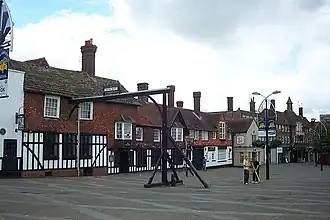 The George Hotel in 2007
The George Hotel in 2007
The George Hotel, also known as the George Inn and now marketed as the Ramada Crawley Gatwick, is a hotel and former coaching inn on the High Street in Crawley, a town and borough in West Sussex, England. The George was one of the country's most famous and successful coaching inns, and the most important in Sussex, because of its location halfway between the capital city, London, and the fashionable seaside resort of Brighton. Cited as "Crawley's most celebrated building", it has Grade II* listed building status.
It is known that a building called the George has existed on the site since the 16th century or earlier, and many sources date the core of the existing inn to 1615. The George Hotel has three principal sections, facing east and running from south to north parallel with Crawley High Street. Nothing of the exterior is original, except perhaps for parts of the tiled roof. The hotel contains 84 rooms and six meeting rooms with a capacity of up to 150, regularly used for conferences, weddings, exhibitions, seminars and training sessions. The present structure is made up of disparate parts of various dates: the inn expanded to take in adjacent buildings as its success grew in the 18th and 19th centuries. Major changes took place in the 1930s, and the annex was knocked down in 1933. (Full article...) -
 Image 4
Image 4.jpg) Trump International Hotel and Tower shortly after completion in August 2008
Trump International Hotel and Tower shortly after completion in August 2008
The Trump International Hotel and Tower is a skyscraper condo-hotel in the Near North Side community area in downtown Chicago, Illinois. The building, named for Donald Trump, was designed by architect Adrian Smith of Skidmore, Owings and Merrill. Bovis Lend Lease built the 100-story structure, which reaches a height of 1,388 feet (423.2 m) including its spire, its roof topping out at 1,169 feet (356 m). It is next to the main branch of the Chicago River, with a view of the entry to Lake Michigan beyond a series of bridges over the river. The building received publicity when the winner of the first season of The Apprentice reality television show, Bill Rancic, chose to manage the construction of the tower over managing a Rancho Palos Verdes–based Trump National Golf Course & Resort in the Los Angeles metro area.
Trump announced in 2001 that the skyscraper would become the tallest building in the world, but after the September 11 attacks that same year, the architects scaled back the building's plans, and its design underwent several revisions. When topped out in 2009, it became the second-tallest building in the U.S. It surpassed the city's John Hancock Center as the building with the highest residence (apartment or condo) in the world, and briefly held this title until the completion of the Burj Khalifa. (Full article...) -
 Image 5
Image 5 The Crown at Whitebrook in 2008
The Crown at Whitebrook in 2008
The Whitebrook, formerly known as The Crown at Whitebrook, is a restaurant with rooms in Whitebrook, 6 miles (9.7 km) south-south-east of Monmouth, Monmouthshire, Wales, near the River Wye and the border with England. The building is thought to date from the 17th century and by the 19th century it was used as a roadside inn. Its restaurant was run by Chef Patron James Sommerin until 2013; it gained a Michelin star in 2007. It contains eight double rooms and a 2-acre (0.81 ha) garden.
On 7 March 2013, it closed because of financial difficulties; at the time it had the longest held Michelin star in Wales. Critics praised the food under Sommerin, but have criticised the difficulty in finding the restaurant. It re-opened in October 2013 under new chef and owner Chris Harrod, and regained the Michelin star in 2014. Harrod serves a menu using locally produced meat and vegetables along with foraged ingredients such as charlock, hedge bedstraw and pennywort. (Full article...) -
![Image 6 Hotelito Desconocido (Spanish: [oteˈlito ðeskonoˈsiðo], "Little Unknown Hotel") was a Mexican boutique hotel and ecotourism resort in the municipality of Tomatlán, Jalisco. Formed in 1995 by an Italian architect, Hotelito Desconocido used an architectural style of that combined both rustic and luxurious designs. It was built on an UNESCO-designated natural reserve that was home to a number of endangered bird and turtle species. The hotel won international and domestic awards for its unique architecture and sustainable energy model, and it was a famous getaway spot for international tourists and celebrities. Its construction, however, created tensions with a local group of fishermen that protested against the alleged ecological violations caused by Hotelito Desconocido's construction and expansions. In 2007, Hotelito Desconocido was acquired by W&G Arquitectos, a company headed by Wendy Dalaithy Amaral Arévalo. She is the wife of Gerardo González Valencia, a former suspected drug lord of Los Cuinis and the Jalisco New Generation Cartel, two allied criminal groups based in Jalisco. After years of resistance from the local fishermen, three members of their group went missing in Guadalajara, Jalisco in 2011 after attending an ecological preservation meeting. They had reportedly previously received death threats from the hotel's management and local farmers who were also opposed to their protests. (Full article...)](./_assets_/Blank.png) Image 6Hotelito Desconocido (Spanish: [oteˈlito ðeskonoˈsiðo], "Little Unknown Hotel") was a Mexican boutique hotel and ecotourism resort in the municipality of Tomatlán, Jalisco. Formed in 1995 by an Italian architect, Hotelito Desconocido used an architectural style of that combined both rustic and luxurious designs. It was built on an UNESCO-designated natural reserve that was home to a number of endangered bird and turtle species. The hotel won international and domestic awards for its unique architecture and sustainable energy model, and it was a famous getaway spot for international tourists and celebrities. Its construction, however, created tensions with a local group of fishermen that protested against the alleged ecological violations caused by Hotelito Desconocido's construction and expansions.
Image 6Hotelito Desconocido (Spanish: [oteˈlito ðeskonoˈsiðo], "Little Unknown Hotel") was a Mexican boutique hotel and ecotourism resort in the municipality of Tomatlán, Jalisco. Formed in 1995 by an Italian architect, Hotelito Desconocido used an architectural style of that combined both rustic and luxurious designs. It was built on an UNESCO-designated natural reserve that was home to a number of endangered bird and turtle species. The hotel won international and domestic awards for its unique architecture and sustainable energy model, and it was a famous getaway spot for international tourists and celebrities. Its construction, however, created tensions with a local group of fishermen that protested against the alleged ecological violations caused by Hotelito Desconocido's construction and expansions.
In 2007, Hotelito Desconocido was acquired by W&G Arquitectos, a company headed by Wendy Dalaithy Amaral Arévalo. She is the wife of Gerardo González Valencia, a former suspected drug lord of Los Cuinis and the Jalisco New Generation Cartel, two allied criminal groups based in Jalisco. After years of resistance from the local fishermen, three members of their group went missing in Guadalajara, Jalisco in 2011 after attending an ecological preservation meeting. They had reportedly previously received death threats from the hotel's management and local farmers who were also opposed to their protests. (Full article...) -
![Image 7 Lotte New York Palace Hotel, with the historic Villard Houses in the foreground Lotte New York Palace Hotel is a luxury hotel in the Midtown Manhattan neighborhood of New York City, at the corner of 50th Street and Madison Avenue. It was originally developed between 1977 and 1980 by Harry Helmsley. The hotel consists of a portion of the Villard Houses, built in the 1880s by McKim, Mead & White, which are New York City designated landmarks and listed on the National Register of Historic Places. It also includes a 51-story skyscraper designed by Emery Roth & Sons and completed in 1980. The Villard Houses, arranged in a U-shaped plan, consist of three wings surrounding a central courtyard on the east side of Madison Avenue. The houses' center wing serves as a lobby, while the south wing serves as an event space. Behind the Villard Houses to the east is the modern skyscraper addition. As of 2021[update], the hotel has 909 rooms and suites. The top floors of the skyscraper are known as the Towers, which consist of 176 luxury units. Among the units in the Towers are four ornate triplex suites, each with their own decorations, as well as four other specialty suites. (Full article...)](./_assets_/Blank.png) Image 7
Image 7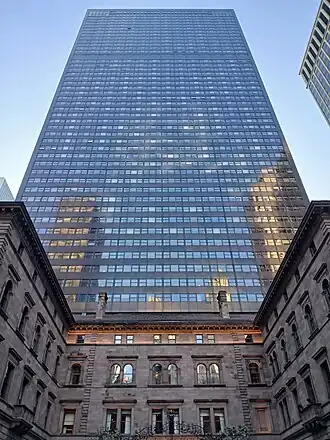 Lotte New York Palace Hotel, with the historic Villard Houses in the foreground
Lotte New York Palace Hotel, with the historic Villard Houses in the foreground
Lotte New York Palace Hotel is a luxury hotel in the Midtown Manhattan neighborhood of New York City, at the corner of 50th Street and Madison Avenue. It was originally developed between 1977 and 1980 by Harry Helmsley. The hotel consists of a portion of the Villard Houses, built in the 1880s by McKim, Mead & White, which are New York City designated landmarks and listed on the National Register of Historic Places. It also includes a 51-story skyscraper designed by Emery Roth & Sons and completed in 1980.
The Villard Houses, arranged in a U-shaped plan, consist of three wings surrounding a central courtyard on the east side of Madison Avenue. The houses' center wing serves as a lobby, while the south wing serves as an event space. Behind the Villard Houses to the east is the modern skyscraper addition. As of 2021, the hotel has 909 rooms and suites. The top floors of the skyscraper are known as the Towers, which consist of 176 luxury units. Among the units in the Towers are four ornate triplex suites, each with their own decorations, as well as four other specialty suites. (Full article...) -
 Image 8
Image 8 The Landmark in 1986, four years before closure, and nine years before implosion
The Landmark in 1986, four years before closure, and nine years before implosion
The Landmark was a hotel and casino located in Winchester, Nevada, east of the Las Vegas Strip and across from the Las Vegas Convention Center. Frank Caroll, the project's original owner, purchased the property in 1961. Fremont Construction began work on the tower that September, while Caroll opened the adjacent Landmark Plaza shopping center and Landmark Apartments by the end of the year. The tower's completion was expected for early 1963, but because of a lack of financing, construction was stopped in 1962, with the resort approximately 80 percent complete. Up to 1969, the topped-off tower was the tallest building in Nevada until the completion of the International Hotel across the street.
In 1966, the Central Teamsters Pension Fund provided a $5.5 million construction loan to finish the project, with ownership transferred to a group of investors that included Caroll and his wife. The Landmark's completion and opening was delayed several more times. In April 1968, Caroll withdrew his request for a gaming license after he was charged with assault and battery against the project's interior designer. The Landmark was put up for sale that month. (Full article...) -
 Image 9
Image 9 The Ryugyong Hotel in 2012
The Ryugyong Hotel in 2012
The Ryugyong Hotel (Korean: 류경호텔; sometimes spelled as Ryu-Gyong Hotel), or Yu-Kyung Hotel, is a 330 m (1,080 ft) tall unfinished pyramid-shaped skyscraper in Pyongyang, North Korea. Its name (lit. "capital of willows") is also one of the historical names for Pyongyang. The building has been planned as a mixed-use development, which would include a hotel.
Construction began in 1987 but was halted in 1992 as North Korea entered a period of economic crisis after the dissolution of the Soviet Union. After 1992, the building stood topped out, but without any windows or interior fittings. In 2008, construction resumed, and the exterior was completed in 2011. The hotel was planned to open in 2012, the centenary of founding leader Kim Il Sung's birth. A partial opening was announced for 2013, but this was cancelled. In 2018, an LED display was fitted to one side, which is used to show propaganda animations and film scenes. (Full article...) -
 Image 10
Image 10 Seen from the corner of 5th Ave. and 58th St.
Seen from the corner of 5th Ave. and 58th St.
The Plaza Hotel (also known as The Plaza) is a luxury hotel and condominium apartment building in Midtown Manhattan in New York City. It is located on the western side of Grand Army Plaza, after which it is named, just west of Fifth Avenue, and is between 58th Street and Central Park South (a.k.a. 59th Street), at the southeastern corner of Central Park. Its primary address is 768 Fifth Avenue, though the residential entrance is One Central Park South. Since 2018, the hotel has been owned by the Qatari firm Katara Hospitality.
The 18-story, French Renaissance-inspired château style building was designed by Henry Janeway Hardenbergh. The facade is made of marble at the base, with white brick covering the upper stories, and is topped by a mansard roof. The ground floor contains the two primary lobbies, as well as a corridor connecting the large ground-floor restaurant spaces, including the Oak Room, the Oak Bar, the Edwardian Room, the Palm Court, and the Terrace Room. The upper stories contain the ballroom and a variety of residential condominiums, condo-hotel suites, and short-term hotel suites. At its peak, the Plaza Hotel had over 800 rooms. Following a renovation in 2008, the building has 282 hotel rooms and 181 condos. (Full article...) -
![Image 11 The Ritz Paris (French pronunciation: [ʁits paʁi]) is a hotel in central Paris, overlooking the Place Vendôme in the city's 1st arrondissement. A member of The Leading Hotels of the World marketing group, the Ritz Paris is ranked among the most luxurious hotels in the world. The hotel was founded in 1898 by the Swiss hotelier César Ritz in collaboration with the French chef Auguste Escoffier. The hotel was constructed behind the façade of an eighteenth-century townhouse. It was among the first hotels in Europe to provide an en suite bathroom, electricity, and a telephone for each room. It quickly established a reputation for luxury and attracted a clientele that included royalty, politicians, writers, film stars, and singers. Several of its suites are named in honour of famous guests of the hotel including Coco Chanel, and the cocktail lounge Bar Hemingway pays tribute to writer Ernest Hemingway. (Full article...)](./_assets_/Blank.png) Image 11
Image 11
The Ritz Paris (French pronunciation: [ʁits paʁi]) is a hotel in central Paris, overlooking the Place Vendôme in the city's 1st arrondissement. A member of The Leading Hotels of the World marketing group, the Ritz Paris is ranked among the most luxurious hotels in the world.
The hotel was founded in 1898 by the Swiss hotelier César Ritz in collaboration with the French chef Auguste Escoffier. The hotel was constructed behind the façade of an eighteenth-century townhouse. It was among the first hotels in Europe to provide an en suite bathroom, electricity, and a telephone for each room. It quickly established a reputation for luxury and attracted a clientele that included royalty, politicians, writers, film stars, and singers. Several of its suites are named in honour of famous guests of the hotel including Coco Chanel, and the cocktail lounge Bar Hemingway pays tribute to writer Ernest Hemingway. (Full article...) -
 Image 12
Image 12 Engraved vignettes of the original hotels c. 1915
Engraved vignettes of the original hotels c. 1915
The Waldorf-Astoria was a hotel on Fifth Avenue in New York, New York, United States, built in 1893 and razed in 1929. It originated as two hotels, built side by side by feuding relatives, was expanded in 1897, and razed to make way for construction of the Empire State Building. Their successor, the current Waldorf Astoria New York, was built on Park Avenue in 1931.
The original Waldorf Hotel opened on March 13, 1893, at the corner of Fifth Avenue and 33rd Street, on the site where millionaire developer William Waldorf Astor had previously built his mansion. Constructed in the German Renaissance style by Henry Janeway Hardenbergh, it stood 225 feet (69 m) high, with fifteen public rooms and 450 guest rooms, and a further 100 rooms allocated to servants, with laundry facilities on the upper floors. It was heavily furnished with antiques purchased by founding manager and president George Boldt and his wife during an 1892 visit to Europe. The Empire Room was the largest and most lavishly adorned room in the Waldorf, and soon after opening it became one of the best restaurants in New York, rivaling Delmonico's and Sherry's. (Full article...) -
 Image 13
Image 13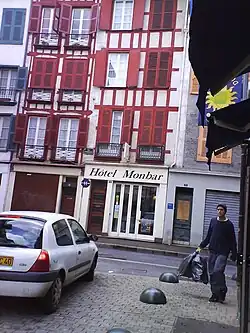 Monbar Hotel in 2007
Monbar Hotel in 2007
The Monbar Hotel attack was carried out by the Grupos Antiterroristas de Liberación (GAL), a Spanish state-sponsored death squad, on 25 September 1985 in Bayonne, Pyrénées-Atlantiques, France. The targets were four members of the Basque separatist terrorist group Euskadi Ta Askatasuna (ETA), whom the Spanish government believed to be senior figures in the organization, itself proscribed as a terrorist group in Spain and France. All four people were killed, with a fifth person, apparently unconnected to ETA, injured in the shooting. This represented the deadliest attack carried out by the GAL. Although two of the participants were apprehended shortly after the shooting, controversy surrounded the possible involvement of senior figures in the Spanish police.
This attack, and similar attacks carried out by the GAL, became a major issue during the 1996 Spanish general election after a supreme court trial established that the Spanish Interior Ministry had provided clandestine funding for the GAL. Spanish Interior Minister José Barrionuevo and his security chief, Rafael Vera, were jailed for ten years for sanctioning a kidnapping and misappropriation of public funds to finance the group, and the GAL scandal is seen as a key factor in the Spanish Socialist Workers' Party (PSOE) losing the election, though more senior figures in the PSOE, such as Felipe Gonzalez, denied knowledge and involvement. (Full article...) -
 Image 14The Hotel Polen fire occurred on 9 May 1977 in Amsterdam, the Netherlands. The conflagration destroyed the Hotel Polen (Hotel Poland), a five-story hotel in the centre of the city which had been built in 1891, as well as the furniture store on the ground level and a nearby bookstore. Many of the tourists staying at the hotel (of whom the majority were Swedes) jumped to their deaths trying to escape the flames. Upon their arrival, the fire department used a life net to help people escape, but not everyone could be saved. The incident resulted in 33 deaths and 21 severe injuries. The cause of the fire is unknown. In 1986, the Polish-born artist Ania Bien created a photographic installation based on the fire which compared it to the Holocaust.
Image 14The Hotel Polen fire occurred on 9 May 1977 in Amsterdam, the Netherlands. The conflagration destroyed the Hotel Polen (Hotel Poland), a five-story hotel in the centre of the city which had been built in 1891, as well as the furniture store on the ground level and a nearby bookstore. Many of the tourists staying at the hotel (of whom the majority were Swedes) jumped to their deaths trying to escape the flames. Upon their arrival, the fire department used a life net to help people escape, but not everyone could be saved. The incident resulted in 33 deaths and 21 severe injuries. The cause of the fire is unknown. In 1986, the Polish-born artist Ania Bien created a photographic installation based on the fire which compared it to the Holocaust.
The hotel was located between the Kalverstraat (no. 15–17) and the Rokin (no. 14), near the present day Madame Tussauds. Its place is now occupied by the Rokin Plaza, originally an office building, which today houses several fashion shops. (Full article...) -
 Image 15The Briarcliff Lodge was a luxury resort in the village of Briarcliff Manor, New York. It was a notable example of Tudor Revival architecture, and was one of the largest wooden structures in the United States. It was also the first hotel in Westchester County. Walter William Law had it built on his estate, and the Law family owned it until 1937. When the lodge opened in 1902, it was one of the largest resort hotels in the world. The lodge hosted presidents, royalty, and celebrities, and was the scene of numerous memorable occasions for visitors and local residents who attended weddings, receptions, and dances in the ballroom and dining room. For a long time, the lodge was situated among other businesses of Walter Law, including the Briarcliff Farms and Briarcliff Table Water Company.
Image 15The Briarcliff Lodge was a luxury resort in the village of Briarcliff Manor, New York. It was a notable example of Tudor Revival architecture, and was one of the largest wooden structures in the United States. It was also the first hotel in Westchester County. Walter William Law had it built on his estate, and the Law family owned it until 1937. When the lodge opened in 1902, it was one of the largest resort hotels in the world. The lodge hosted presidents, royalty, and celebrities, and was the scene of numerous memorable occasions for visitors and local residents who attended weddings, receptions, and dances in the ballroom and dining room. For a long time, the lodge was situated among other businesses of Walter Law, including the Briarcliff Farms and Briarcliff Table Water Company.
In 1933, the lodge ended year-round service and housed a "health-diet sanitarium" until the Edgewood Park School for Girls began operation there from 1937 to 1954. From 1936 to 1939, the lodge was run again as a hotel in the summer months while the school was closed. From 1955 to 1994, The King's College used the lodge building and built dormitories and academic buildings. Abandoned and unmaintained after 1994, the Briarcliff Lodge was destroyed between 2003 and 2004. (Full article...)
General images -
-
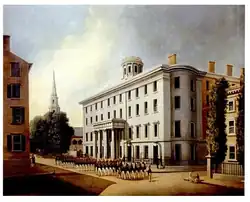 Image 1Tremont House in Boston, United States, a luxury hotel, the first to provide indoor plumbing (from Hotel)
Image 1Tremont House in Boston, United States, a luxury hotel, the first to provide indoor plumbing (from Hotel) -
-
 Image 3The Harrison Hotel, an SRO hotel in Oakland, California. (from Apartment hotel)
Image 3The Harrison Hotel, an SRO hotel in Oakland, California. (from Apartment hotel) -
 Image 4On top of the cliff, the Riosol Hotel in Mogán (from Hotel)
Image 4On top of the cliff, the Riosol Hotel in Mogán (from Hotel) -

-
 Image 6Ice Hotel in Jukkasjärvi, Sweden (from Hotel)
Image 6Ice Hotel in Jukkasjärvi, Sweden (from Hotel) -

-
-
.jpg) Image 9Dutchmaid Motel, 10 miles north of Lancaster, Pennsylvania (from Motel)
Image 9Dutchmaid Motel, 10 miles north of Lancaster, Pennsylvania (from Motel) -

-
 Image 11Abandoned Grand West Courts in Chicago, demolished in September 2013 (from Motel)
Image 11Abandoned Grand West Courts in Chicago, demolished in September 2013 (from Motel) -
 Image 12Sign on Chicago motel (from Motel)
Image 12Sign on Chicago motel (from Motel) -
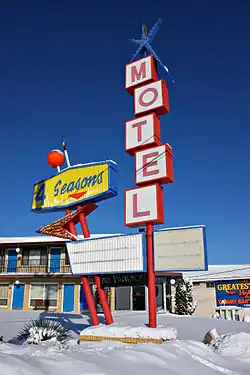 Image 13The 4 Seasons Motel sign in Wisconsin Dells, Wisconsin is an excellent example of googie architecture. (from Motel)
Image 13The 4 Seasons Motel sign in Wisconsin Dells, Wisconsin is an excellent example of googie architecture. (from Motel) -
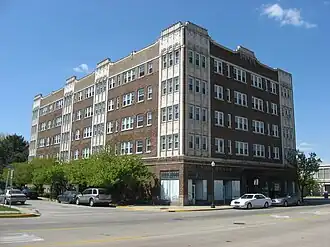 Image 14An apartment hotel in Hammond, Indiana (from Apartment hotel)
Image 14An apartment hotel in Hammond, Indiana (from Apartment hotel) -
.jpg)
-
.jpg)
-
 Image 17The Waldorf Astoria New York, the most expensive hotel ever sold, cost US$1.95 billion in 2014. (from Hotel)
Image 17The Waldorf Astoria New York, the most expensive hotel ever sold, cost US$1.95 billion in 2014. (from Hotel) -

-
 Image 19A typical hotel room with a bed, desk, and television (from Hotel)
Image 19A typical hotel room with a bed, desk, and television (from Hotel) -
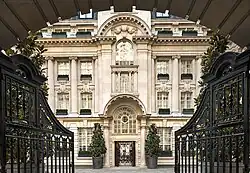
-
 Image 21The Peninsula New York hotel, located at the corner of Fifth Avenue and 55th Street in Midtown Manhattan (from Hotel)
Image 21The Peninsula New York hotel, located at the corner of Fifth Avenue and 55th Street in Midtown Manhattan (from Hotel) -
 Image 22Burj Al Arab stands on an artificial island from Jumeirah Beach and is connected to the mainland by a private curving bridge (from Hotel)
Image 22Burj Al Arab stands on an artificial island from Jumeirah Beach and is connected to the mainland by a private curving bridge (from Hotel) -

-
Image 24Ithaa, the first undersea restaurant at the Conrad Maldives Rangali Island resort (from Hotel)
-
-

-

-
-

-

-
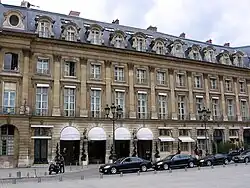
-
 Image 32The Star Lite Motel in Dilworth, Minnesota is a typical American 1950s L-shaped motel. (from Motel)
Image 32The Star Lite Motel in Dilworth, Minnesota is a typical American 1950s L-shaped motel. (from Motel) -

-
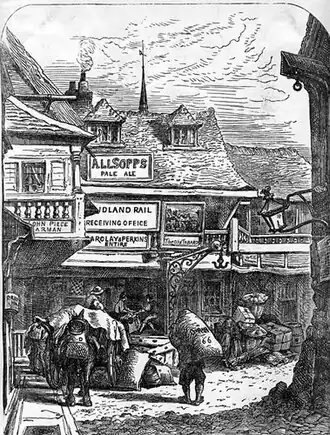
-
 Image 35Wigwam Motel No. 6, a unique motel/motor court on historic Route 66 in Holbrook, Arizona (from Motel)
Image 35Wigwam Motel No. 6, a unique motel/motor court on historic Route 66 in Holbrook, Arizona (from Motel) -
 Image 36Motels frequently have large pools, such as the Thunderbird Motel on the Columbia River in Portland, Oregon (1973). (from Motel)
Image 36Motels frequently have large pools, such as the Thunderbird Motel on the Columbia River in Portland, Oregon (1973). (from Motel) -
_(cropped).jpg) Image 37The Boody House Hotel in Toledo, Ohio (from Hotel)
Image 37The Boody House Hotel in Toledo, Ohio (from Hotel)
In the news
- 4 August 2025 –
- Over 10,000 hotel owners in Europe, represented by the HOTREC union, file a joint lawsuit against Netherlands-based travel agency Booking.com seeking compensation for losses from 2004 to 2024, alleging that the booking agency prevented the hotels from offering lower prices on their own sites. (DW) (Reuters)
Selected articles -
-
 Image 1H World Group Limited (simplified Chinese: 华住酒店集团; traditional Chinese: 華住酒店集團; pinyin: Huázhù Jiǔdiàn Jítuán), formerly Huazhu Hotels Group in English, is a hotel management company in China. In 2010, H World Group was listed on Nasdaq; in September 2020, H World Group achieved a secondary listing on the Main Board of the Hong Kong Stock Exchange. In January 2023, H World was listed in the Hurun China 500 Most Valuable Private Companies 2022 and ranked No. 126. Its headquarters are in Jiading District, Shanghai. (Full article...)
Image 1H World Group Limited (simplified Chinese: 华住酒店集团; traditional Chinese: 華住酒店集團; pinyin: Huázhù Jiǔdiàn Jítuán), formerly Huazhu Hotels Group in English, is a hotel management company in China. In 2010, H World Group was listed on Nasdaq; in September 2020, H World Group achieved a secondary listing on the Main Board of the Hong Kong Stock Exchange. In January 2023, H World was listed in the Hurun China 500 Most Valuable Private Companies 2022 and ranked No. 126. Its headquarters are in Jiading District, Shanghai. (Full article...) -
 Image 2
Image 2
Dalata Hotel Group plc is an Irish hotel company based in Dublin, Ireland. It owns and operates hotels across Ireland, Germany and the United Kingdom mainly under the brands Maldron Hotels and Clayton Hotels. (Full article...) -
![Image 3 Escoffier in 1914 Georges Auguste Escoffier (French: [ʒɔʁʒ oɡyst ɛskɔfje]; 28 October 1846 – 12 February 1935) was a French chef, restaurateur and culinary writer who popularised and updated traditional French cooking methods. Much of Escoffier's technique was based on that of Marie-Antoine Carême, one of the codifiers of French haute cuisine; Escoffier's achievement was to simplify and modernise Carême's elaborate and ornate style. In particular, he codified the recipes for the five mother sauces. Referred to by the French press as roi des cuisiniers et cuisinier des rois ("king of chefs and chef of kings"—also previously said of Carême), Escoffier was a preeminent figure in London and Paris during the 1890s and the early part of the 20th century. Alongside the recipes, Escoffier elevated the profession. In a time when kitchens were loud, riotous places where drinking on the job was commonplace, Escoffier demanded cleanliness, discipline, and silence from his staff. In bringing order to the kitchen, he tapped into his own military experience to develop the hierarchical brigade de cuisine system for organising the kitchen staff which is still standard in many restaurants today. He worked in partnership with hotelier César Ritz, rising to prominence together at the Savoy in London serving the elite of society, and later at the Ritz Hotel in Paris and the Carlton in London. Escoffier published Le Guide Culinaire, which is still used as a major reference work, both in the form of a cookbook and a textbook on cooking. Escoffier's recipes, techniques, and approaches to kitchen management remain highly influential today, and have been adopted by chefs and restaurants not only in France, but throughout the world. (Full article...)](./_assets_/Blank.png) Image 3
Image 3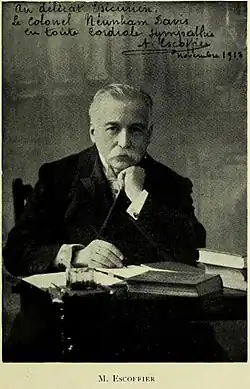 Escoffier in 1914
Escoffier in 1914
Georges Auguste Escoffier (French: [ʒɔʁʒ oɡyst ɛskɔfje]; 28 October 1846 – 12 February 1935) was a French chef, restaurateur and culinary writer who popularised and updated traditional French cooking methods. Much of Escoffier's technique was based on that of Marie-Antoine Carême, one of the codifiers of French haute cuisine; Escoffier's achievement was to simplify and modernise Carême's elaborate and ornate style. In particular, he codified the recipes for the five mother sauces. Referred to by the French press as roi des cuisiniers et cuisinier des rois ("king of chefs and chef of kings"—also previously said of Carême), Escoffier was a preeminent figure in London and Paris during the 1890s and the early part of the 20th century.
Alongside the recipes, Escoffier elevated the profession. In a time when kitchens were loud, riotous places where drinking on the job was commonplace, Escoffier demanded cleanliness, discipline, and silence from his staff. In bringing order to the kitchen, he tapped into his own military experience to develop the hierarchical brigade de cuisine system for organising the kitchen staff which is still standard in many restaurants today. He worked in partnership with hotelier César Ritz, rising to prominence together at the Savoy in London serving the elite of society, and later at the Ritz Hotel in Paris and the Carlton in London.
Escoffier published Le Guide Culinaire, which is still used as a major reference work, both in the form of a cookbook and a textbook on cooking. Escoffier's recipes, techniques, and approaches to kitchen management remain highly influential today, and have been adopted by chefs and restaurants not only in France, but throughout the world. (Full article...) -
 Image 4
Image 4
Taj Hotels is a chain of luxury hotels and a subsidiary of the Indian Hotels Company Limited, headquartered in Mumbai, India. Incorporated by Jamsetji Tata in 1902, the company is a part of the Tata Group. The company employed over 20,000 people in the year 2010. (Full article...) -
 Image 5
Image 5 The hotel at the ICC
The hotel at the ICC
The Ritz-Carlton, Hong Kong is the highest five-star hotel in Hong Kong, and third highest in the world, located on the top floors of the International Commerce Centre which is the tallest building in Hong Kong. The Ritz-Carlton is a brand of the American company Marriott International. It was the world's highest hotel when opened in March 2011, until it was surpassed in 2020 by Shanghai Tower. (Full article...) -
 Image 6Travelodge or Travelodge by Wyndham (formerly branded TraveLodge) refers to several hotel chains around the world. Current operations include the United States, Canada, the United Kingdom, Spain, Ireland, New Zealand, Australia and several countries in Asia. As of December 31, 2018, it had 435 properties with 31,005 rooms. (Full article...)
Image 6Travelodge or Travelodge by Wyndham (formerly branded TraveLodge) refers to several hotel chains around the world. Current operations include the United States, Canada, the United Kingdom, Spain, Ireland, New Zealand, Australia and several countries in Asia. As of December 31, 2018, it had 435 properties with 31,005 rooms. (Full article...) -
![Image 7 Seen from across 23rd Street The Hotel Chelsea (also known as the Chelsea Hotel and the Chelsea) is a hotel at 222 West 23rd Street in the Chelsea neighborhood of Manhattan in New York City. Built between 1883 and 1884, the hotel was designed by Philip Hubert in a style described variously as Queen Anne Revival and Victorian Gothic. The 12-story Chelsea, originally a housing cooperative, has been the home of numerous writers, musicians, artists, and entertainers, some of whom still lived there in the 21st century. As of 2022[update], most of the Chelsea is a luxury hotel. The building is a New York City designated landmark and on the National Register of Historic Places. The front facade of the Hotel Chelsea is 11 stories high, while the rear of the hotel rises 12 stories. The facade is divided vertically into five sections and is made of brick, with some flower-ornamented iron balconies; the hotel is capped by a high mansard roof. The Hotel Chelsea has thick load-bearing walls made of masonry, as well as wrought iron floor beams and large, column-free spaces. When the hotel opened, the ground floor was divided into an entrance hall, four storefronts, and a restaurant; this has been rearranged over the years, with a bar and the El Quijote restaurant occupying part of the ground floor. The Chelsea was among the first buildings in the city with duplex and penthouse apartments, and there is also a rooftop terrace. The hotel originally had no more than 100 apartments; it was subdivided into 400 units during the 20th century and has 155 units as of 2022. The idea for the Chelsea arose after Hubert & Pirsson had developed several housing cooperatives in New York City. Developed by the Chelsea Association, the structure quickly attracted authors and artists after opening. Several factors, including financial hardships and tenant relocations, prompted the Chelsea's conversion into an apartment hotel in 1905. Knott Hotels took over the hotel in 1921 and managed it until about 1942, when David Bard bought it out of bankruptcy. Julius Krauss and Joseph Gross joined Bard as owners in 1947. After David Bard died in 1964, his son Stanley operated it for 43 years, forming close relationships with many tenants. The hotel underwent numerous minor changes in the late 20th century after falling into a state of disrepair. The Krauss and Gross families took over the hotel in 2007 and were involved in numerous tenant disputes before the Chelsea closed for a major renovation in 2011. The hotel changed ownership twice in the 2010s before BD Hotels took over in 2016, and the Chelsea reopened in 2022. (Full article...)](./_assets_/Blank.png) Image 7
Image 7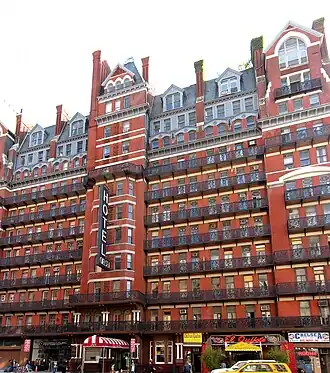 Seen from across 23rd Street
Seen from across 23rd Street
The Hotel Chelsea (also known as the Chelsea Hotel and the Chelsea) is a hotel at 222 West 23rd Street in the Chelsea neighborhood of Manhattan in New York City. Built between 1883 and 1884, the hotel was designed by Philip Hubert in a style described variously as Queen Anne Revival and Victorian Gothic. The 12-story Chelsea, originally a housing cooperative, has been the home of numerous writers, musicians, artists, and entertainers, some of whom still lived there in the 21st century. As of 2022, most of the Chelsea is a luxury hotel. The building is a New York City designated landmark and on the National Register of Historic Places.
The front facade of the Hotel Chelsea is 11 stories high, while the rear of the hotel rises 12 stories. The facade is divided vertically into five sections and is made of brick, with some flower-ornamented iron balconies; the hotel is capped by a high mansard roof. The Hotel Chelsea has thick load-bearing walls made of masonry, as well as wrought iron floor beams and large, column-free spaces. When the hotel opened, the ground floor was divided into an entrance hall, four storefronts, and a restaurant; this has been rearranged over the years, with a bar and the El Quijote restaurant occupying part of the ground floor. The Chelsea was among the first buildings in the city with duplex and penthouse apartments, and there is also a rooftop terrace. The hotel originally had no more than 100 apartments; it was subdivided into 400 units during the 20th century and has 155 units as of 2022.
The idea for the Chelsea arose after Hubert & Pirsson had developed several housing cooperatives in New York City. Developed by the Chelsea Association, the structure quickly attracted authors and artists after opening. Several factors, including financial hardships and tenant relocations, prompted the Chelsea's conversion into an apartment hotel in 1905. Knott Hotels took over the hotel in 1921 and managed it until about 1942, when David Bard bought it out of bankruptcy. Julius Krauss and Joseph Gross joined Bard as owners in 1947. After David Bard died in 1964, his son Stanley operated it for 43 years, forming close relationships with many tenants. The hotel underwent numerous minor changes in the late 20th century after falling into a state of disrepair. The Krauss and Gross families took over the hotel in 2007 and were involved in numerous tenant disputes before the Chelsea closed for a major renovation in 2011. The hotel changed ownership twice in the 2010s before BD Hotels took over in 2016, and the Chelsea reopened in 2022. (Full article...) -
 Image 8
Image 8 The Palace Hotel on Market Street in San Francisco, 2008
The Palace Hotel on Market Street in San Francisco, 2008
The Palace Hotel is a landmark historic hotel in San Francisco, California, located at the southwest corner of Market and New Montgomery streets. The hotel is also referred to as the New Palace Hotel to distinguish it from the original 1875 Palace Hotel, which had been demolished after being gutted by the fire caused by the 1906 San Francisco earthquake.
The present structure opened on December 19, 1909, on the same site as its predecessor. The hotel was closed from January 1989 to April 1991 to undergo a two-year renovation and seismic retrofit. Occupying most of a city block, the hotel's now more than century-old nine-story main building stands immediately adjacent to both the BART Montgomery Street Station and the Monadnock Building, and across Market Street from Lotta's Fountain.
The Palace Hotel is a member of Historic Hotels of America, the official program of the National Trust for Historic Preservation. (Full article...) -
 Image 9
Image 9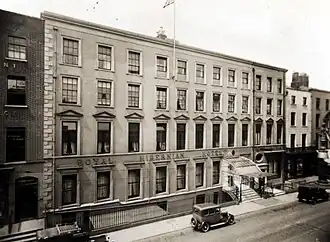 Royal Hibernian Hotel circa 1930s
Royal Hibernian Hotel circa 1930s
The Royal Hibernian Hotel was a hotel on Dawson Street, Dublin, Ireland. Its history dates back to 1751, making it one of the country's first hotels, and it was popular with the wealthy in the 19th century. Its restaurants specialised in haute cuisine, which gradually declined in popularity in the 20th century, leading to the hotel's closure in 1982 and subsequent demolition and replacement with the Royal Hibernian Way and the offices of Davy Stockbrokers. (Full article...) -
 Image 10
Image 10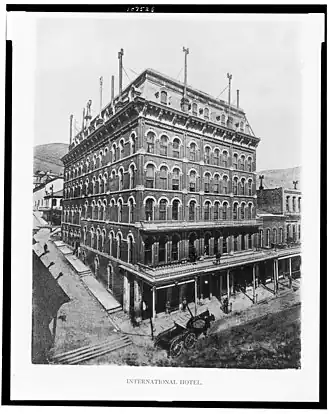 International Hotel in 1890
International Hotel in 1890
The International Hotel was a hotel located in Virginia City, Nevada. The hotel initially opened as a wooden one-story building in 1860. Two years later, a three-story brick addition was added to the hotel. The wooden portion was dismantled in 1863, and was used to construct a new International Hotel in Austin, Nevada, where it remained operational as of 2025. A four-story brick addition took the place of the wooden building.
The International Hotel burned down in the "Great Fire of 1875". A new International Hotel began construction the following year, and opened with 160 rooms on March 31, 1877. At six stories, the hotel was the tallest building in Nevada until a fire destroyed it in December 1914. The site of the former hotel became a parking lot. (Full article...) -
 Image 11
Image 11 Rossiya Hotel in 2004
Rossiya Hotel in 2004
The Rossiya Hotel (Russian: Гостиница «Россия», romanized: Gostinitsa "Rossiya") was a hotel in Moscow and was the largest hotel in the world from 1967 to 1980. Until its closure in 2006, it remained the second largest hotel in Europe, with 3,182 rooms. Throughout its existence, the hotel welcomed about ten million guests, including more than two million foreigners. Famous hotel guests included Mikhail Gorbachev, George H. W. Bush and Mike Tyson. (Full article...) -
 Image 12
Image 12
The Hard Rock Hotel and Casino was a resort located near the Las Vegas Strip in Paradise, Nevada, United States. Virgin Hotels Las Vegas opened at the site following renovations, in 2021. The resort is located on 16.7 acres (6.8 ha) on the corner of Harmon Avenue and Paradise Road, about a mile east of the Las Vegas Strip. At the time of its closure, the Hard Rock included 1,506 rooms across several hotel towers, a 61,704-square-foot (5,732.5 m2) casino, and a music venue known as The Joint. It had also hosted a weekly pool party event known as Rehab.
Plans for a Hard Rock hotel were announced in 1991, and the resort opened on March 10, 1995, as the world's first rock and roll-themed hotel. The Hard Rock Hotel began as a joint venture between Hard Rock Cafe founder Peter Morton and Harveys. Following disagreements, Morton bought out Harveys' share of the resort in 1997. A new 11-story hotel tower was added in 1999, as part of a $100 million renovation.
The Hard Rock was featured in various media, including television shows and music videos. It was also a frequent source of controversy and legal problems. In the 2000s, drugs and sexual conduct were common issues at the resort's nightclubs and pool area. The Hard Rock was also criticized for its advertising. The resort catered to a younger demographic, and it began using risqué advertising to compete against the Palms resort, which opened in 2001. However, such advertising led to a complaint from the Nevada Gaming Control Board in 2004. The board alleged that the Hard Rock ads promoted casino cheating and drug use, and a battle ensued over the resort's free-speech rights. The complaint was eventually settled. (Full article...) -
 Image 13The Coral Court Motel was a 1941 U.S. Route 66 motel constructed in Marlborough, Missouri (a St. Louis suburb) and designated on the National Register of Historic Places in St. Louis County in 1989 as a valuable example of the art deco and streamline moderne architectural styles. It expanded to 77 rooms in the heyday of automobile tourism on US 66, only to decline after the highway was bypassed by Interstate 44 in the 1970s and close its doors forever in 1993. Despite strong local efforts advocating historic preservation, it was demolished in 1995 for a suburban housing development now known as Oak Knoll Manor. (Full article...)
Image 13The Coral Court Motel was a 1941 U.S. Route 66 motel constructed in Marlborough, Missouri (a St. Louis suburb) and designated on the National Register of Historic Places in St. Louis County in 1989 as a valuable example of the art deco and streamline moderne architectural styles. It expanded to 77 rooms in the heyday of automobile tourism on US 66, only to decline after the highway was bypassed by Interstate 44 in the 1970s and close its doors forever in 1993. Despite strong local efforts advocating historic preservation, it was demolished in 1995 for a suburban housing development now known as Oak Knoll Manor. (Full article...) -
![Image 14 Seen from the east 4 Park Avenue (formerly known as the Vanderbilt Hotel) is a 22-story building in the Murray Hill neighborhood of Manhattan in New York City. Designed by Warren and Wetmore, the structure was built for Alfred Gwynne Vanderbilt and opened in 1912 as a hotel. It is along the west side of Park Avenue between 33rd and 34th Streets. Following a renovation by Schuman, Lichtenstein & Claman between 1965 and 1967, the top 18 stories have been used as residential apartments. The lowest three stories above ground, as well as three basement levels, are used as commercial space and carry an alternate address of 6 Park Avenue. As of 2021[update], the building is owned by The Feil Organization. 4 Park Avenue's facade was originally made of gray brick and white architectural terracotta. The facade of the lowest four stories dates from the 1960s renovation and is made of glass and steel. Above that, the building retains its original facade and has two light courts facing Park Avenue. The building has a steel superstructure and had mechanical equipment in its basements. The hotel's lobby was designed in the Adam style and is partially preserved as the modern residential lobby. The first basement had a grill room known as the Della Robbia Room, decorated ornately with Guastavino tile; part of the room survives and is designated as a New York City interior landmark. The upper stories had close to 600 rooms, and the top two stories originally contained a private penthouse apartment for A. G. Vanderbilt and his family. After several years of planning and construction, the Vanderbilt Hotel opened on January 10, 1912, as one of the first large commercial developments in Murray Hill. The Vanderbilt soon became a popular meeting place for companies in the textile and women's apparel industries. A syndicate bought the hotel in 1925, and the New York Life Insurance Company foreclosed on the hotel in 1935. Manger Hotels acquired the hotel in 1941 and continued to operate it until the hotel closed in 1965. A group led by John Marqusee bought the building in 1966 and spent the next year converting the hotel into residences and offices. The building has undergone minor renovations over the years. (Full article...)](./_assets_/Blank.png) Image 14
Image 14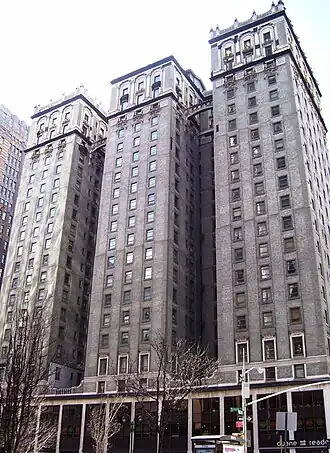 Seen from the east
Seen from the east
4 Park Avenue (formerly known as the Vanderbilt Hotel) is a 22-story building in the Murray Hill neighborhood of Manhattan in New York City. Designed by Warren and Wetmore, the structure was built for Alfred Gwynne Vanderbilt and opened in 1912 as a hotel. It is along the west side of Park Avenue between 33rd and 34th Streets. Following a renovation by Schuman, Lichtenstein & Claman between 1965 and 1967, the top 18 stories have been used as residential apartments. The lowest three stories above ground, as well as three basement levels, are used as commercial space and carry an alternate address of 6 Park Avenue. As of 2021, the building is owned by The Feil Organization.
4 Park Avenue's facade was originally made of gray brick and white architectural terracotta. The facade of the lowest four stories dates from the 1960s renovation and is made of glass and steel. Above that, the building retains its original facade and has two light courts facing Park Avenue. The building has a steel superstructure and had mechanical equipment in its basements. The hotel's lobby was designed in the Adam style and is partially preserved as the modern residential lobby. The first basement had a grill room known as the Della Robbia Room, decorated ornately with Guastavino tile; part of the room survives and is designated as a New York City interior landmark. The upper stories had close to 600 rooms, and the top two stories originally contained a private penthouse apartment for A. G. Vanderbilt and his family.
After several years of planning and construction, the Vanderbilt Hotel opened on January 10, 1912, as one of the first large commercial developments in Murray Hill. The Vanderbilt soon became a popular meeting place for companies in the textile and women's apparel industries. A syndicate bought the hotel in 1925, and the New York Life Insurance Company foreclosed on the hotel in 1935. Manger Hotels acquired the hotel in 1941 and continued to operate it until the hotel closed in 1965. A group led by John Marqusee bought the building in 1966 and spent the next year converting the hotel into residences and offices. The building has undergone minor renovations over the years. (Full article...) -
 Image 15
Image 15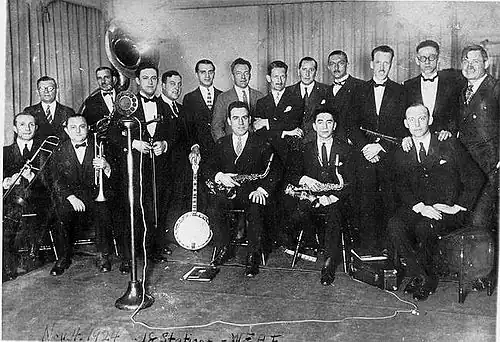
Waldorf-Astoria Dance Orchestra in 1924. Will Rogers (standing right), Art Gillham, Wendell Hall, Carson Robison, the Eveready Quartet, Graham McNamee.
The Waldorf-Astoria Orchestra was an orchestra that played primarily at the Waldorf Astoria Hotel, both the old and new locations. In addition to providing dinner music at the famous hotel, the orchestra made over 300 recordings and many radio broadcasts. It was established in the 1890s, and was directed by Carlo Curti in early 1900s, Joseph Knecht at least from 1908 to 1925, later by Jack Denny and others, and then Xavier Cugat from approximately 1933 to 1949.
Denny and the Waldorf-Astoria Orchestra appeared in the movie Moonlight and Pretzels in 1933. Both Denny and Cugat had their own orchestras when they began playing at the Waldorf-Astoria, so the term "Waldorf-Astoria orchestras" might be an appropriate description. (Full article...)
Did you know (auto-generated)

- ... that Frank Ocean's song "American Wedding" was pulled from streaming platforms because of its unauthorized use of "Hotel California"?
- ... that New York City's Hotel Marseilles, once a shelter for Holocaust survivors, later became affordable housing for the elderly?
- ... that the Hotel Normandie supported the Leaders of the World?
- ... that according to Jimmy Carter, "more of [Georgia's] business was probably conducted in the Henry Grady than in the state capitol"?
- ... that Danny Kaleikini once worked as a singing hotel busboy in Waikiki before becoming the headline entertainer at the Kahala Hilton for 28 years?
- ... that originally, residents of New York City's Ansonia Hotel received fresh eggs from a farm on its roof?
- ... that the kissing room of the New York Biltmore Hotel remained after the rest of the hotel had been demolished?
- ... that the wine cellar of New York City's Barclay Hotel is on the second floor?
Related portals
WikiProjects
![]()
- WikiProject Travel and Tourism
- WikiProject Companies
- WikiProject Hotels (inactive)
List articles

- Historic Hotels of America
- List of largest hotels
- List of largest hotels in Europe
- List of tallest hotels
- List of casino hotels
- List of chained-brand hotels
- List of defunct hotel chains
- List of hotels in the Caribbean
- List of caravanserais
- Lists of hotels
- List of motels
- Lists of hotels by country (category page)
- Lists of hotels by city (category page)
Topics
|
| ||||||||||||||||||||||||||||||||||||||||||||||||||||||||||||||||||||||||||||||||||||||||||||||||||||||||||||||||||||||||||||||||||||||||||||||||||||||||||||||||||||||||||||||||||||||||||||||||||||||||||||||||||||||||||||||||||||||||||||||||||||||||||||||||||||||||||
Categories

Associated Wikimedia
The following Wikimedia Foundation sister projects provide more on this subject:
-
Commons
Free media repository -
Wikibooks
Free textbooks and manuals -
Wikidata
Free knowledge base -
Wikinews
Free-content news -
Wikiquote
Collection of quotations -
Wikisource
Free-content library -
Wikiversity
Free learning tools -
Wiktionary
Dictionary and thesaurus
More portals
-
 List of all portals
List of all portals -

-

-

-

-

-

-

-

-

-
 Random portal
Random portal -
 WikiProject Portals
WikiProject Portals







